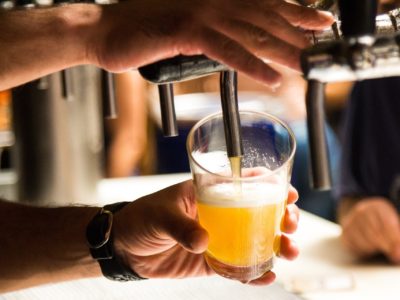Reducing Hypertension with Healthy Eating
Normally when you strain something in your body, you will be only too aware of it.
Strain a muscle in your leg when exercising, and you’ll find yourself hobbling in pain; strain on the toilet, and you could end up with haemorrhoids.
However, there is one instance when your body can be under incredible strain, without any signs or symptoms to alert you.

What is Hypertension?
Hypertension occurs when your heart is constantly forced to work extra hard, to pump blood throughout your body. This strain is caused by tightening and reduced flexibility in your arteries, which tends to occur as we grow older. While some people are more at risk of developing the condition due to genetics or ethnicity (for example, high blood pressure is more common among Aboriginal and Torres Strait Islanders than non-Indigenous people), lifestyle factors also play a large role.

The Silent Killer
Hypertension usually goes unnoticed as people generally cannot feel the changes in their blood pressure. For this reason, hypertension (or high blood pressure) can go undetected for years – often with devastating consequences, such as heart attacks, kidney failure, strokes, and even death. No wonder it’s called the “Silent Killer”!

LifeStyle Risks
There are definite links between diet and hypertension. We know that the risk of developing high blood pressure increases if we are consuming too much saturated fat, salt and alcohol. Other lifestyle factors such as cigarette smoking, lack of exercise and obesity further increase the likelihood of developing not only high blood pressure but also diabetes and high cholesterol.
Measuring Blood Pressure
The best way to discover if you are one of the 1 in 7 Australians with this condition, is to visit your GP regularly to have your blood pressure checked.
You’re probably already familiar with what a blood pressure reading looks like – according to the National Heart Foundation of Australia, a measurement of above 140/90 indicates high blood pressure.
- The first measurement (the “140”) indicates your systolic blood pressure – when your heart contracts, forcing the blood through the arteries.
- The second figure (the “90”), records the pressure against the arteries as your heart relaxes and fills with blood – the diastolic blood pressure.
In both cases, the higher the figure, the more strain is being placed on your heart and circulatory system.
How a Fuel Your Life dietitian can help with Hypertension
Medication and dietary changes tend to be the first lines of defence when it comes to combatting high blood pressure.
At Fuel Your Life, an Accredited Practising Dietitian can help you create lifestyle habits to reduce your blood pressure, such as how to lose those extra kilos, and then maintain a healthy body weight.
We can also help you to identify the sorts of food you should be embracing (like these 9 Foods for Better Blood Pressure) – or avoiding.
Most people for example, don’t realise just how much salt they are consuming even in seemingly healthy foods – such as pre-packaged cereals, salads and dressings, wraps, and Asian sauces. Most of us consume twice the recommended amount of salt each day – without ever touching a salt shaker!
Book your consultation today!
So if your doctor has indicated that you have high blood pressure, take steps to reduce the strain on your heart and arteries with the help of a dietitian at Fuel Your Life.

